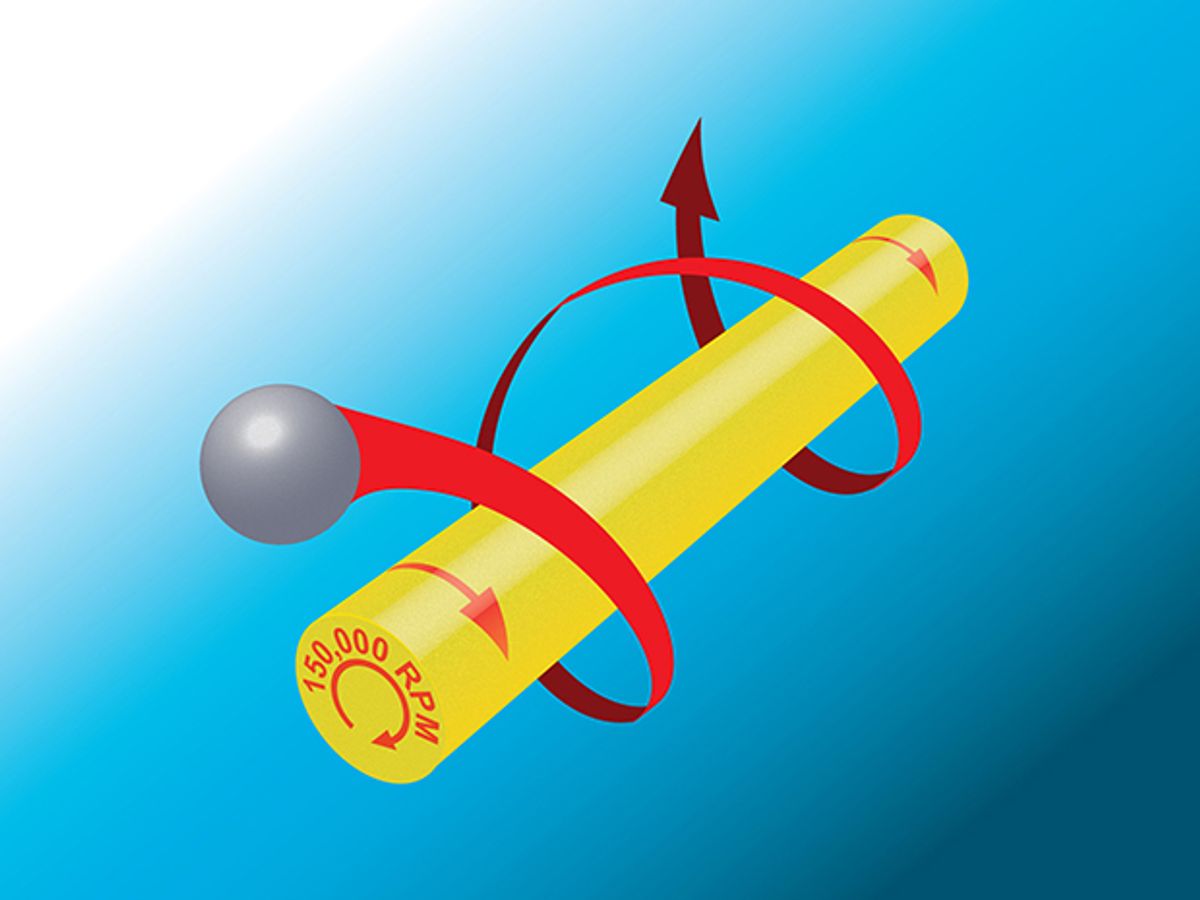Recent research has demonstrated that triggering nanoparticles to spin after being injected into the bloodstream can provide some remarkable medical benefits. Just this week, we reported on work out of the University of Georgia in which nanorods that were stimulated to spin by rotating magnets provided greater efficacy for the blood-thinning drug recombinant tissue plasminogen activator, or t-PA, used in stroke treatment. Earlier this year, researchers at Penn State University got nanorods to spin in response to both magnets and ultrasonic waves to churn cancer cells into mush.
While these have been promising results, nobody really knew how fast these nanorods were spinning—that is until now. Researchers at the National Institute of Standards and Technology (NIST) in cooperation with the Penn State researchers discovered that these nanorods were spinning so quickly that they believe that their application may extend beyond medical uses.
The NIST team measured 150 000 revolutions per minute (RPM) for the spinning nanoparticles, which is 10 times faster than any other nanoparticle in a liquid. To give you a sense of how this measures up to other spinning nanoparticles (referred to in the technical literature as nanomotors), in May of this year researchers at the University of Texas Austin developed what they said was the fastest spinning and longest lasting nanomotor yet produced. Those nanomotors were measured at 18 000 RPM for 15 continuous hours. While this was a huge increase over similar nanomotors that could run anywhere from 14 RPM to 500 RPM, they don’t even come close to the 150 000 RPM measured by the NIST team.
The reasons why the nanorods are spinning so rapidly is not entirely clear. However, because of these high speeds the NIST team believes they could be used for high-speed machining and mixing.
If this machining and mixing potential is to be realized it will become necessary to control the "speed and feed" of the nanomotors independently. To this end, the researchers discovered that the size of the nanorods affected their measurements and that their rotation was independent of their forward motion.
In future research, the NIST team plan to determine why the nanorods spin in the first place and how the vortex that the spinning nanorods generate in the liquid surrounding them impact their interaction with each other.
Dexter Johnson is a contributing editor at IEEE Spectrum, with a focus on nanotechnology.



